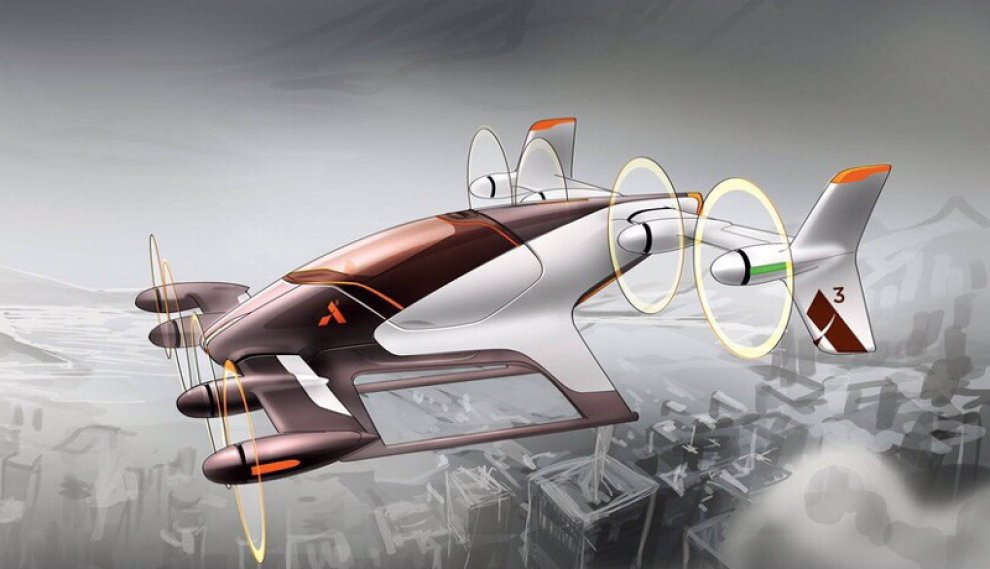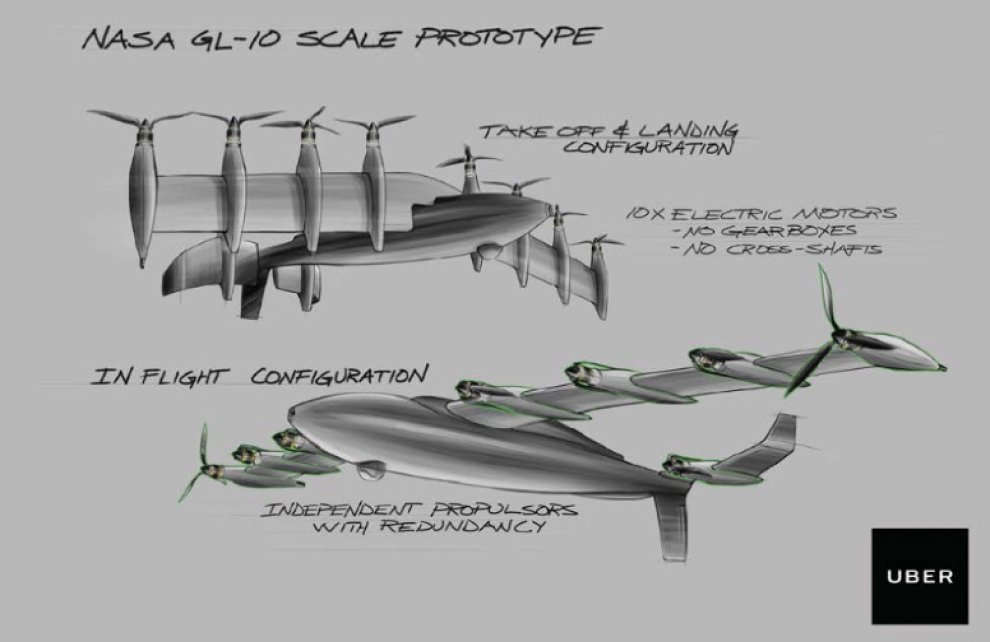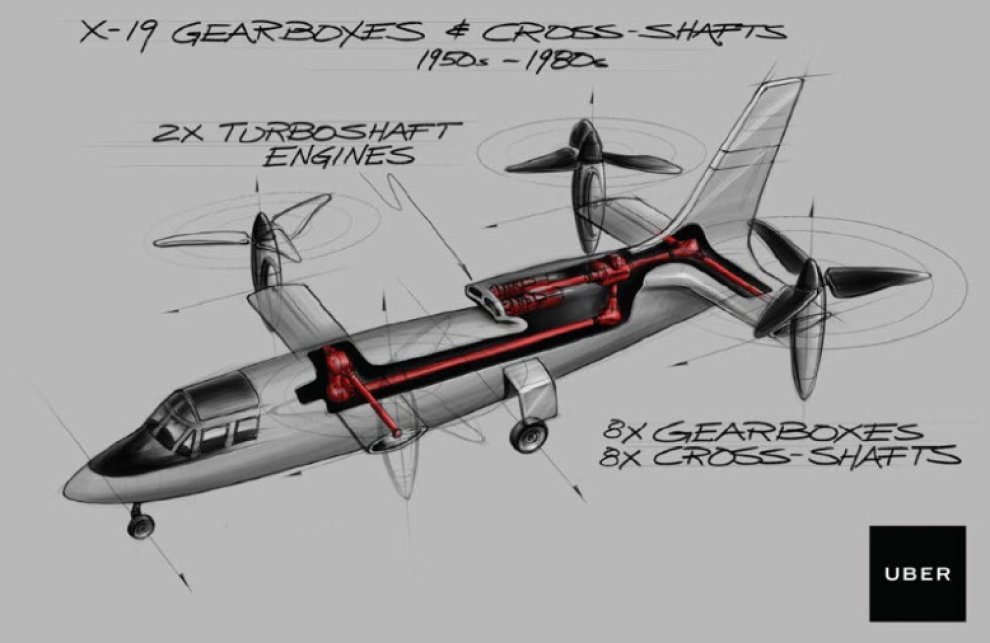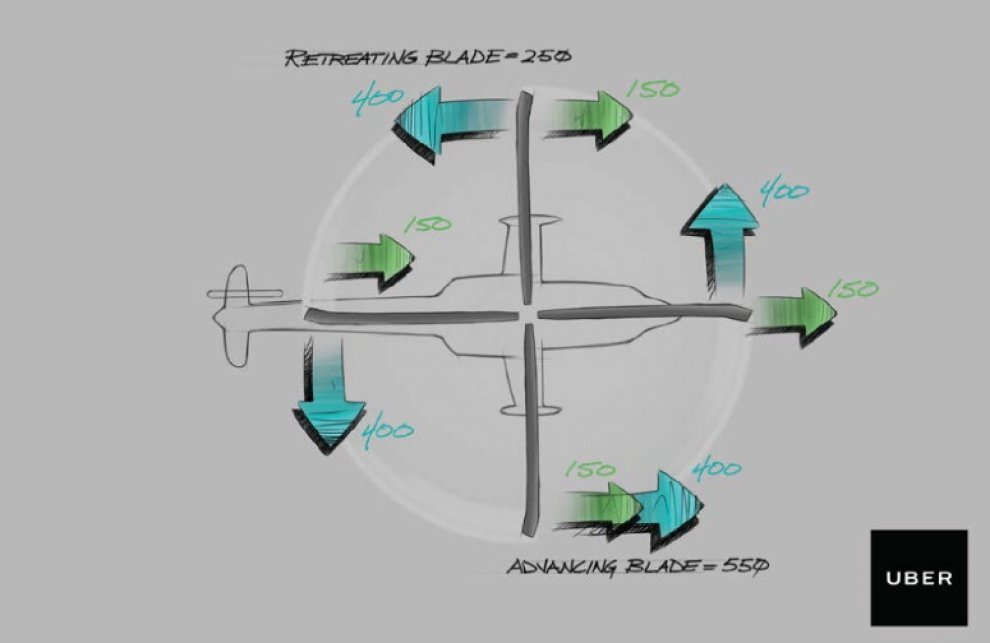In a detailed 86-page white paper named “Elevate”, Uber outlining its concept of urban flying car (released on Oct. 27, visit the web site: https://medium.com/@UberPubPolicy/fast-forwarding-to-a-future-of-on-demand-urban-air-transportation-f6ad36950ffa#.qh6l05x3d), the ride-hailing company provides design requirements for vehicle developers, lays out the certification, infrastructure, airspace and regulatory requirements for the concept to become reality. Uber’s concept is based on a vehicle with small four-seat vertical-takeoff-and-landing (VTOL) with distributed electric propulsion to increase safety and reduce noises. Aircraft will have a pilot initially, but in the future will be autonomous. The Uber wants create a new market, an urban air-taxi system with rideshare service, creating feasibility for the entire transportation system.
To enable a VTOL ridesharing network, the vehicles must be safe and quiet, Uber says. They must be fast enough to provide significant time savings over ground transport, and be able to operate in crowded urban environments where riders want to begin and end their trips. They must be inexpensive enough that trip costs are comparable with ground transport and cheaper than owning a car. And they must be small enough to enable high utilization, but large enough to maximize passenger throughput.

“riding in a VTOL needs to be safer than riding in an automobile,” the white paper says. Uber initially targets a fatality rate per passenger mile one-quarter that of current Part 135 air-taxi operations and twice as safe as driving. Previous VTOL developments were mechanically complex and failure-prone, but electric propulsion promises simplicity and redundancy. What Uber is proposing is doable within five years.
The aircraft will use electric motors and multiple small tail rotors and large-diameter main rotors with high speeds responsible for the noise (target set by Uber is a 67 dB sound exposure level on the ground from an aircraft at 250 ft. altitude) generated by helicopters, the white paper says. Electric propulsion will also eliminate carbon dioxide and other emissions from aircraft operations.
Uber’s VTOL aircraft will not be designed to perform a wide range of missions. The minimum goal is to conduct two 80 km trips at a maximum of 240-350 km/h, with sufficient energy for two vertical takeoffs and landings plus reserves.
“Our analysis tells us this design mission range can be met within five years,” as per Uber. This is assumed with four passegers (1850 kg gross-weight) in winged vehicle with a cruise lift-to-drag ratio of at least 10 and 400 Wh/kg batteries in a pack providing 140 kWh capacity with a 20000 cycle life. “There is no question battery specific energy will limit the range of VTOLs,” but improvements in packaging will help, the paper says.
Uber sets a VTOL utilization of 2080 hr. a year and a vehicle life of 25,000-27,000 hr. or 13 years. This assumes aircraft are flight-ready 8 hr. per day, 260 days of the year.
The company sets the acquisition price of $1.2 million per aircraft initially at existing helicopter production rates, reducing to $600,000 with rate about 500 a year, and $200,000 long term for a fully autonomous vehicle if production can be pushed as high as 5,000 a year.
Based on these and other cost assumptions detailed in the white paper, Uber estimates direct costs for the autonomous aircraft will approach 50 cents per vehicle mile, equivalent to 35 cents per ground mile. “We can expect that the price for a 45-mi. pool VTOL trip, which would replace a 60-mile automobile trip, could approach as low as $21 for the 15-min. journey,” the white paper says.
Uber is also thinking in terms of locating vertiports or vertistops at public transport hubs. “VTOLs will not land outside your house,” he says. “We are thinking multimodal.” The company’s UberHop and UberPool ground services are widely used for “first/last-mile” travel to and from public transportation and provide a model for Uber Elevate.
Uber is also ready to accelerate certification. “We are very eyes-open going into this,” says Chief Product Officer Jeff Holden. But both U.S. and
European regulations are preparing to move to industry-based consensus standards for faster certification of small aircraft. “This is a good start,” he says. “Uber can help with standards development, and act as a lightning rod for other interested shareholders.”
Below are posted images extracted from Elevate:



